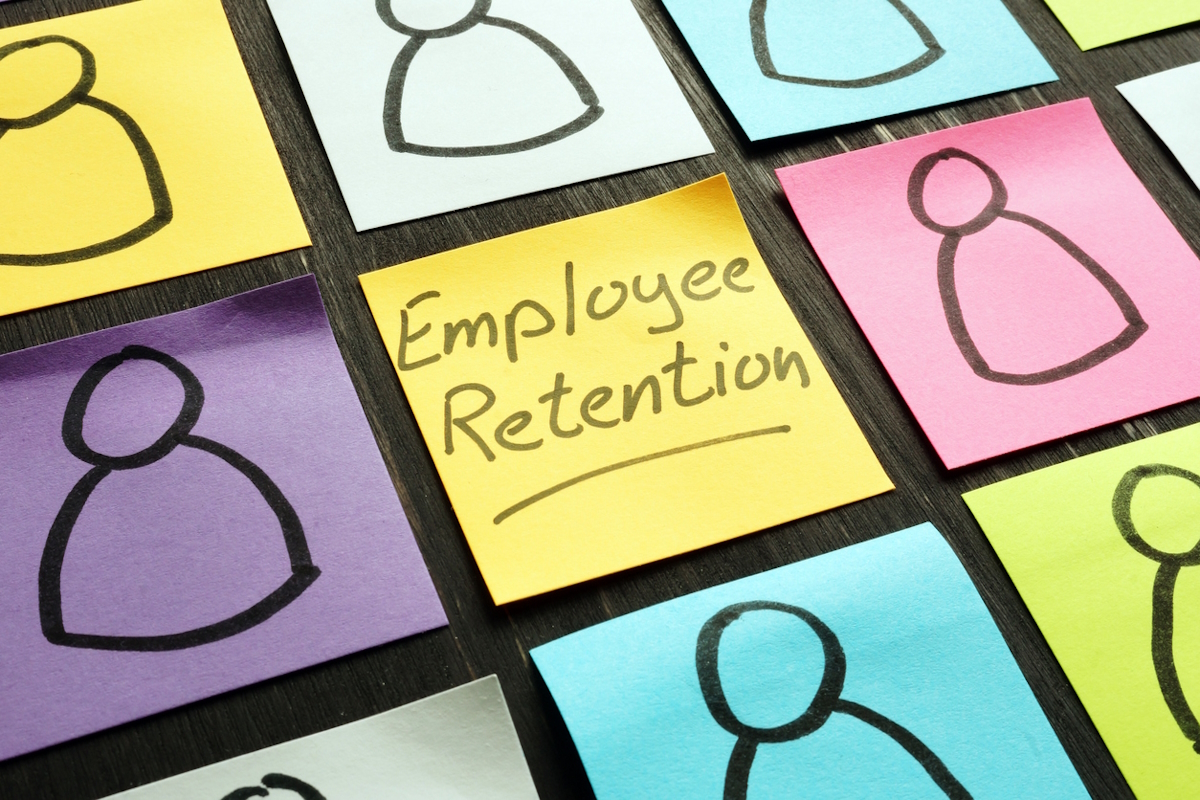Taming the New Year job jump: strategies for talent retention

Mike Hay at Benenden Health offers practical advice and strategies for business and HR leaders to navigate a period of potential change within their workforce.
A new year has a way of sparking change. It’s a time when many professionals press pause, reassess their career paths, and ask themselves: Am I where I want to be? Is it time for a new challenge?
Whether it’s a step up the ladder, a pivot to a new role, or a leap into an entirely different industry, the start of the year often brings with it a surge of ambition and the desire for something more fulfilling.
Career transitions
The employment landscape has transformed significantly, with several trends reshaping career approaches and workforce management. "Job hopping" has become increasingly prevalent, particularly among younger workers seeking growth and diverse experiences.
Hybrid work models have redefined workplace expectations, with employees prioritising flexibility and work-life balance. This trend has expanded the geographical scope of job searches, allowing individuals to consider opportunities beyond their immediate location.
Another notable trend is the increase in mid-career pivots driven by desires for new challenges, personal value alignment, or pursuing long-held passions.
As we enter the new year, these trends culminate in a significant surge in job-seeking activity. Recent data shows that more than four million UK workers (11% of the workforce) are actively seeking new employment. This is up from 8% two years ago, indicating a return to the January jobs rush.
Such a surge presents both challenges and opportunities for organisations. From a recruitment perspective, it offers a wider talent pool but also increases competition for top talent. On the retention front, the trend emphasises the importance of employee engagement and satisfaction, making this a crucial moment for businesses to solidify recruitment and retention strategies.
The cost of losing talent
High employee turnover significantly impacts a company’s bottom line and overall performance. Creating a workplace that promotes long-term employee commitment is critical, given the substantial costs of employee turnover, including productivity losses, hiring expenses, and training investments.
But achieving this goal is just the beginning; continuous adaptation is essential to maintaining an effective strategy. A strong retention strategy is vital for maintaining competitiveness and ensuring long-term success. When designing such a strategy, business leaders must consider skills required now and in the future.
While financial considerations will always play a role for both current and potential employees, it’s the fabric of an organisation’s culture that truly sets it apart. An inclusive culture that prioritises employee well-being creates more than just a workplace; it builds a sense of belonging, purpose, and trust. Building a supportive and people-first environment has become a cornerstone for many successful recruitment and retention strategies.
The relationship between employee well-being and organisational success is reciprocal. A workforce that feels appreciated and supported performs better and remains loyal. Simultaneously, prospective employees view employers who prioritise well-being as a concrete sign of commitment to its employees.
Strategies to retain key talent
Actionable employee retention strategies that leaders can adopt include the following:
Support careers, not jobs
Employee well-being encompasses more than just physical health; it includes a sense of purpose and fulfilment. Structured career development programmes and mentorship opportunities allow employees to see a clear path for professional growth. This can be supported by offering coaching to key employees, which can significantly improve retention rates.
In smaller companies, where vertical progression may be limited, internal rotation programmes provide new perspectives and challenges. These programmes help create a group of employees with a broad, generalist understanding of the organisation, rather than siloed specialist knowledge.
Build in flexibility
Building a flexible workforce is crucial. Look at where cross-training or secondments are possible so employees can adapt to different roles in the short- and long term. If businesses want to build strong retention, they should embrace work arrangements that recognise the diverse needs of employees.
Recently at Benenden Health, one of the operational trainers in our HR teams was seconded to an internal maternity cover role in the sales team. We backfilled her role with two other secondments; one three-day-a-week part-time colleague and a second colleague who is going to work two days a week as a trainer whilst continuing in her current role for the other three days. This flexibility has enabled us to provide development opportunities for three colleagues.
Options like remote work, flexible hours, or compressed weeks show trust in employees while acknowledging the importance of work-life balance. This autonomy reduces stress, increases engagement, and improves retention by allowing employees to work in ways that suit their needs.
Build strong communication frameworks
A culture that encourages transparent communication and values feedback is essential for employee well-being. To align organisational policies with workforce needs, leaders should implement regular check-ins, anonymous feedback channels, and discussion forums.
Pulse employee surveys can test the team’s temperature in a light-hearted and anonymous way. Organising team-building activities can strengthen relationships and cohesion within the team.
Regularly reviewing and discussing well-being initiatives helps strengthen company culture, destigmatise health conversations at work, and encourage timely, relevant support.
Capitalise on recruitment opportunities
Creating a culture of adaptability and resilience is crucial for businesses to effectively navigate any period of employee transitions. To position themselves strategically, companies should focus on three key areas.
Firstly, a strong employer brand. Organisations must cultivate a strong, positive image that resonates with potential candidates. This effort involves showcasing company culture, values, and mission through various channels, including social media, websites, and attendance at industry events.
Secondly, offering comprehensive benefit packages that address holistic employee needs is crucial. In 2025, top talent will be looking for more than just competitive salaries. They’ll seek employers who prioritise their overall well-being, offering benefits such as flexible work, mental health support, professional development opportunities, and work-life balance initiatives.
Thirdly, leveraging data and technology to streamline the recruitment process and identify ideal candidates will be essential. Advanced AI-driven tools and analytics can help organisations sift through large pools of applicants more efficiently, identifying those who best fit the company’s needs and culture, but we mustn’t forget to still ensure candidates receive a personalised interaction with the company. Building on or making the most of existing talent pools, including engaging with potential candidates through social media and professional networks, can help reach a broader audience.
Lastly, creating a unique employee value proposition (EVP) that communicates what sets your organisation apart will make you stand out in a competitive job market.
Act now
The start of a new year, with its wave of transitions, offers a valuable chance for organisations to step back and rethink their approach. It’s the perfect time to implement forward-thinking policies, strengthen team resilience, and shape a workplace that truly stands out – one that appeals not only to current team members but also to future talent.
Leaders must take these proactive steps to future-proof their organisations, ensuring they are well-positioned to thrive in 2025 and beyond.
Mike Hay is Chief People Officer at Benenden Health
Main image courtesy of iStockPhoto.com and designer491

Business Reporter Team
Related Articles
Most Viewed
Winston House, 3rd Floor, Units 306-309, 2-4 Dollis Park, London, N3 1HF
23-29 Hendon Lane, London, N3 1RT
020 8349 4363
© 2025, Lyonsdown Limited. Business Reporter® is a registered trademark of Lyonsdown Ltd. VAT registration number: 830519543





